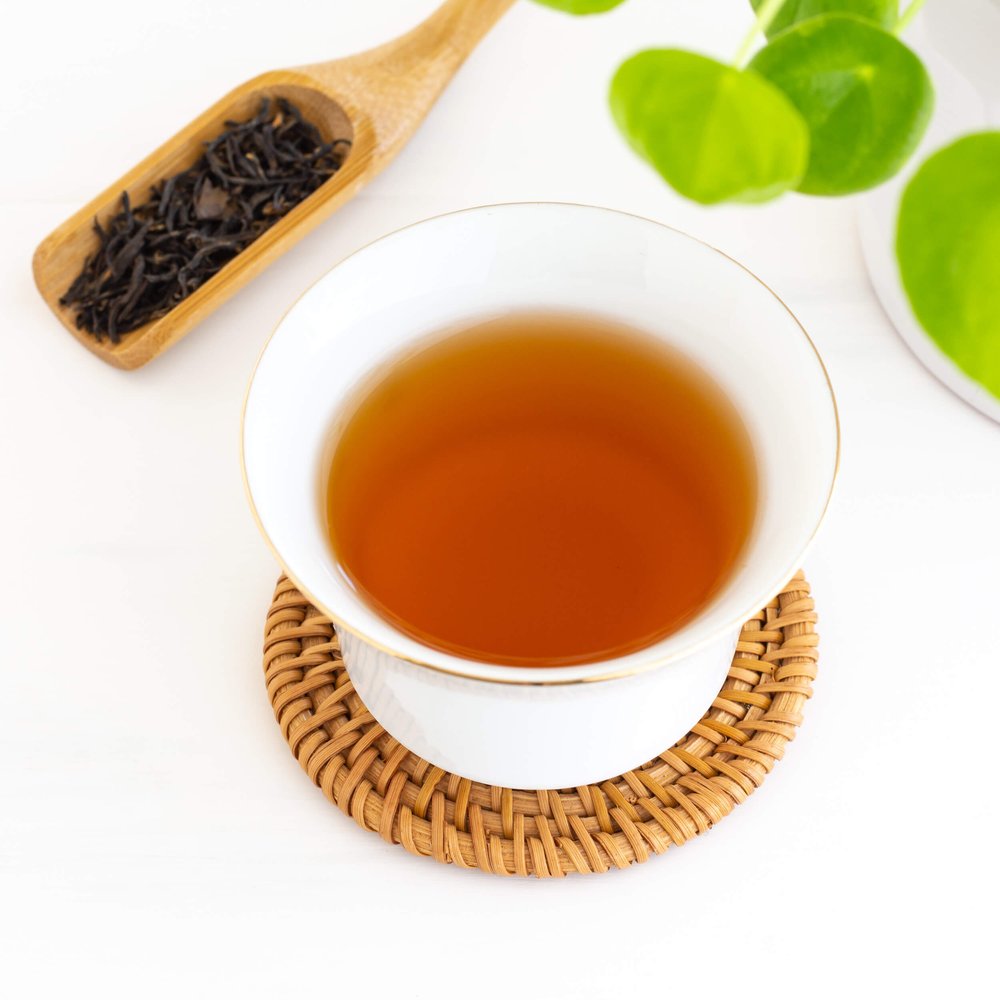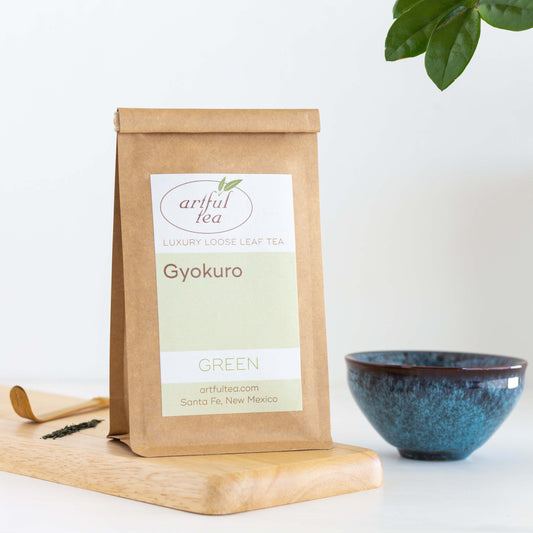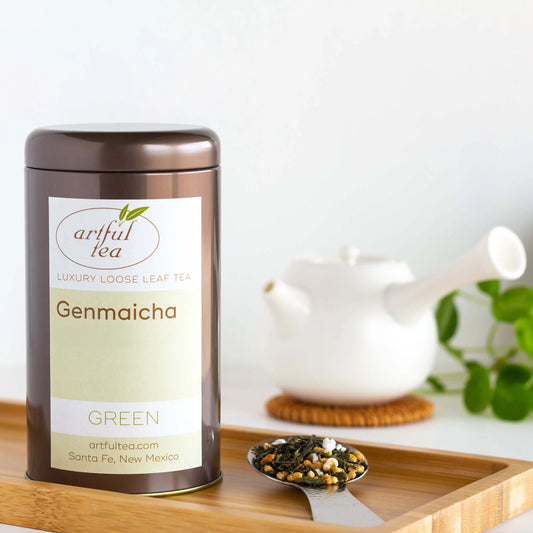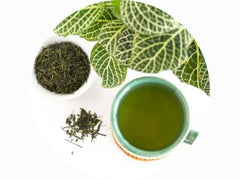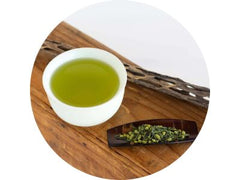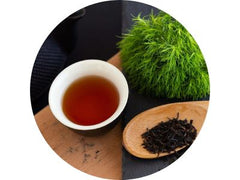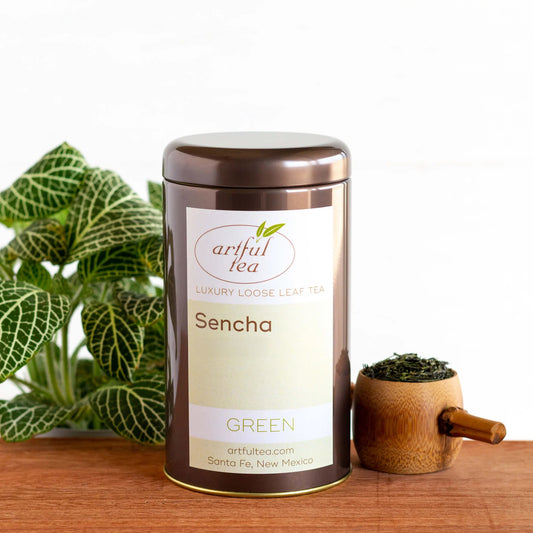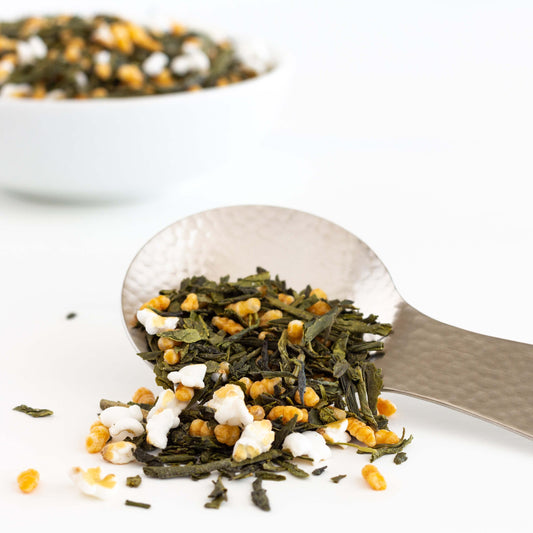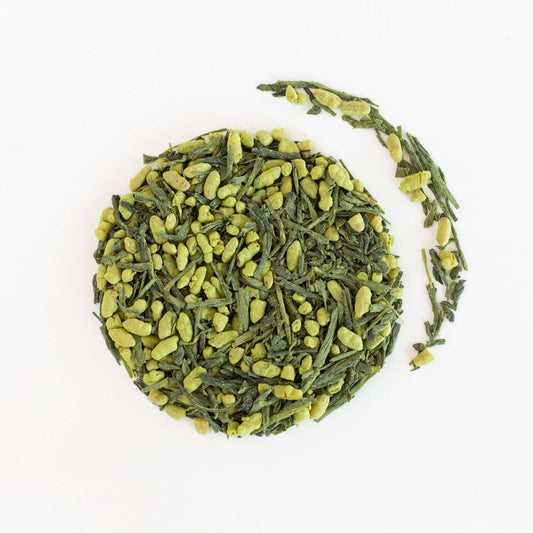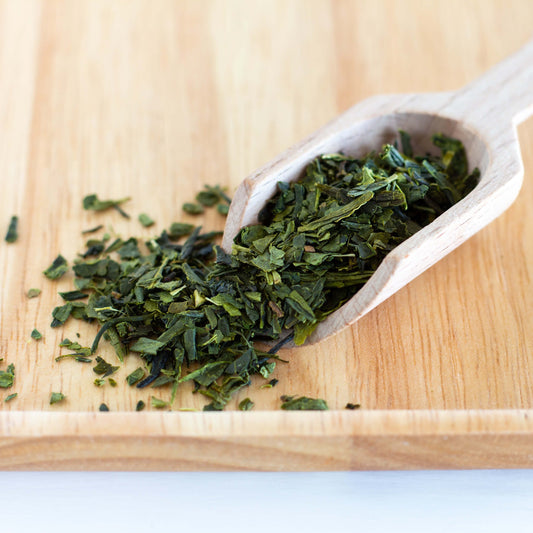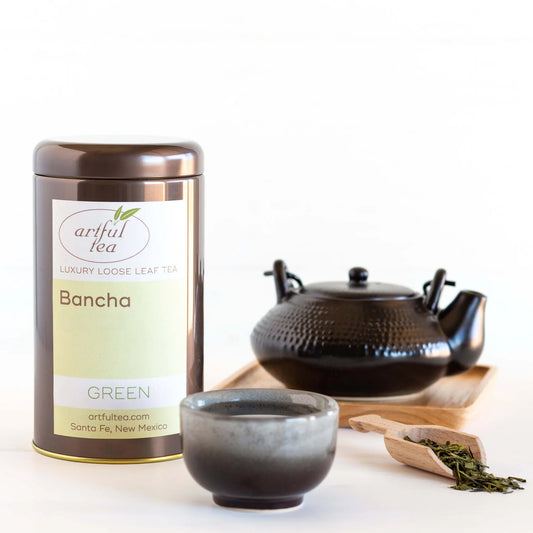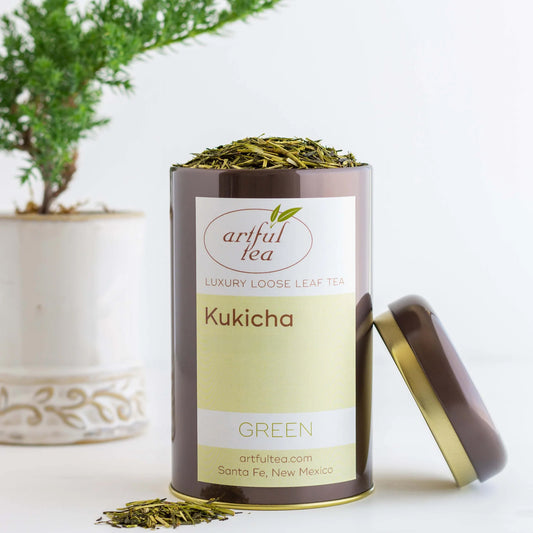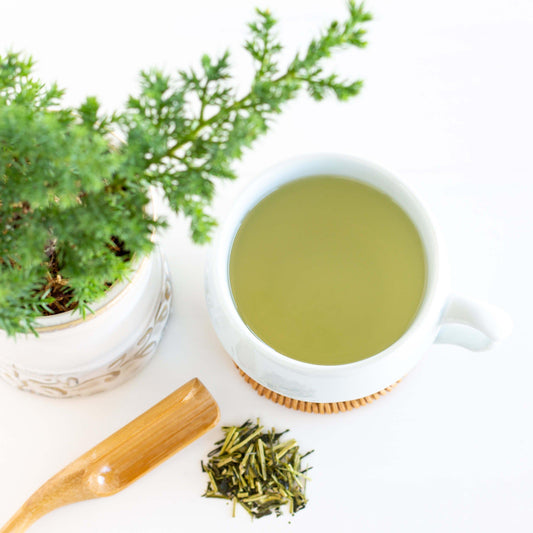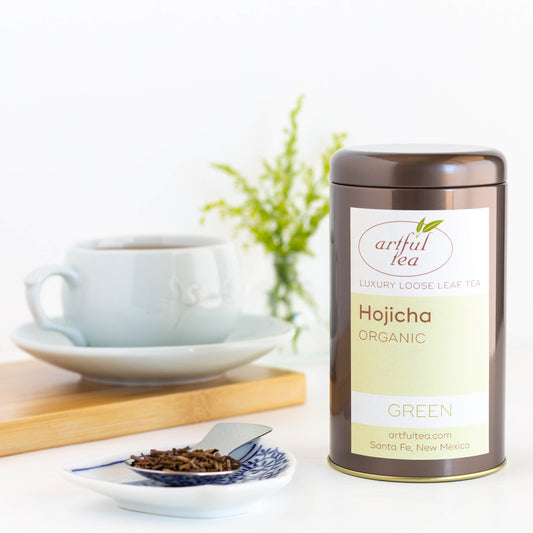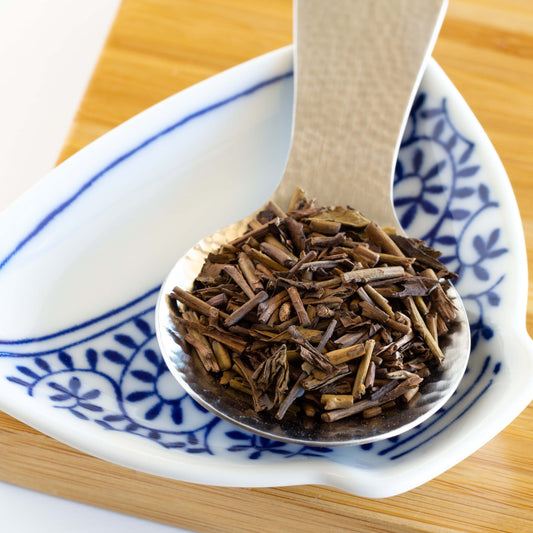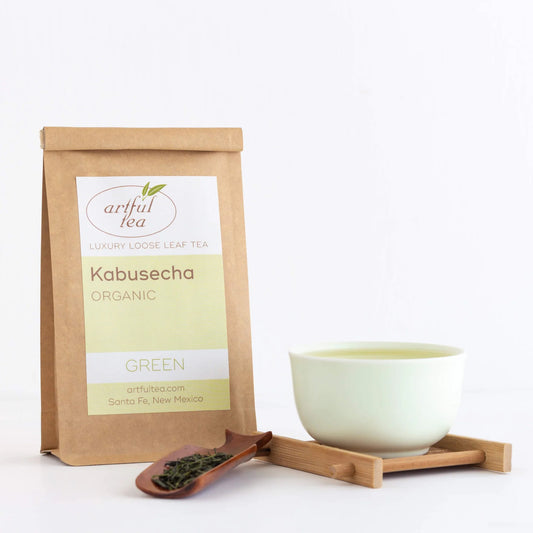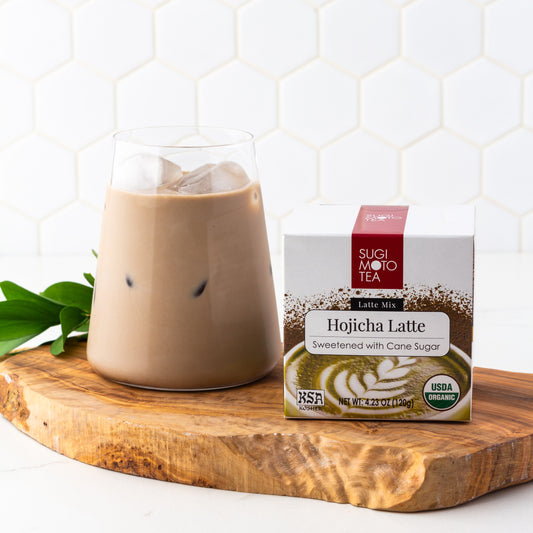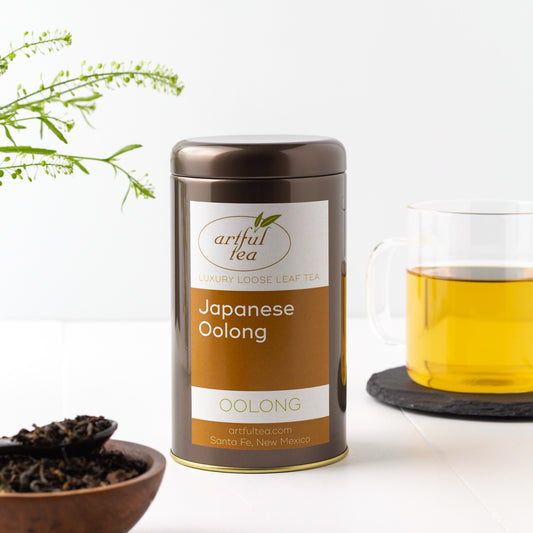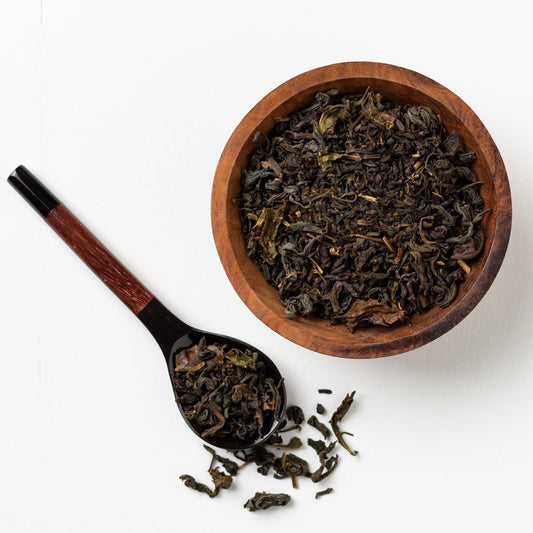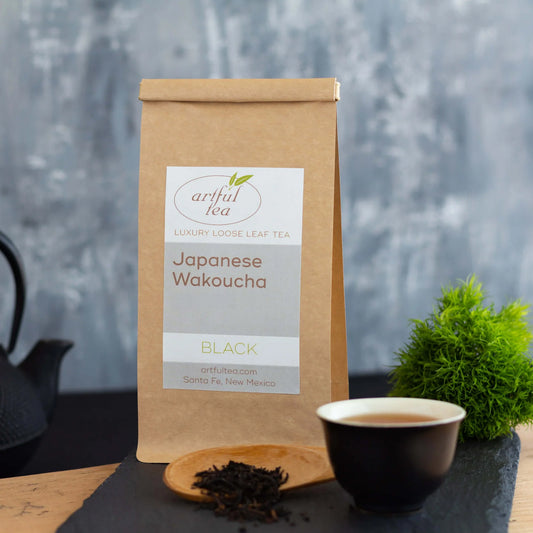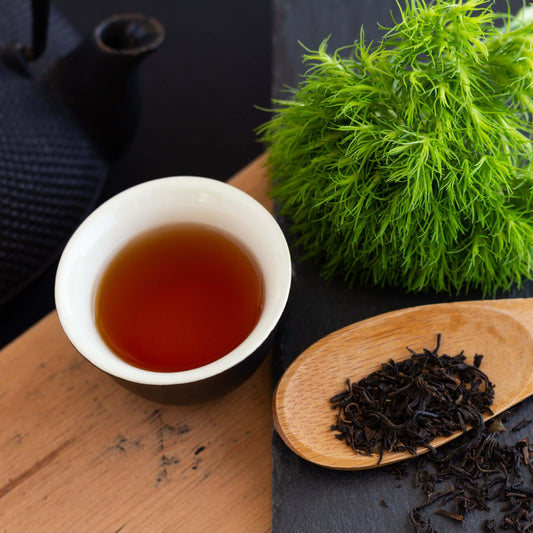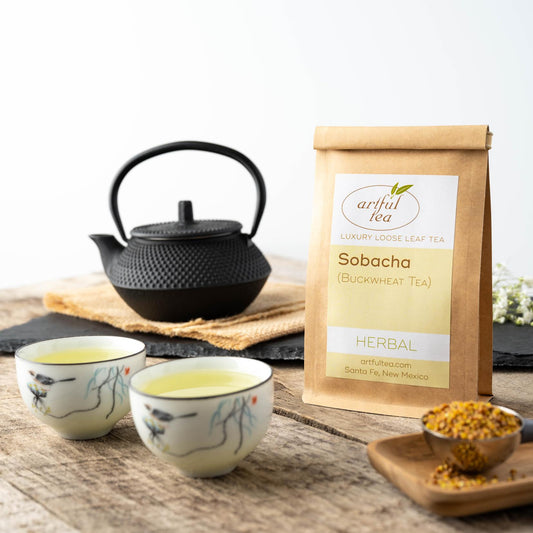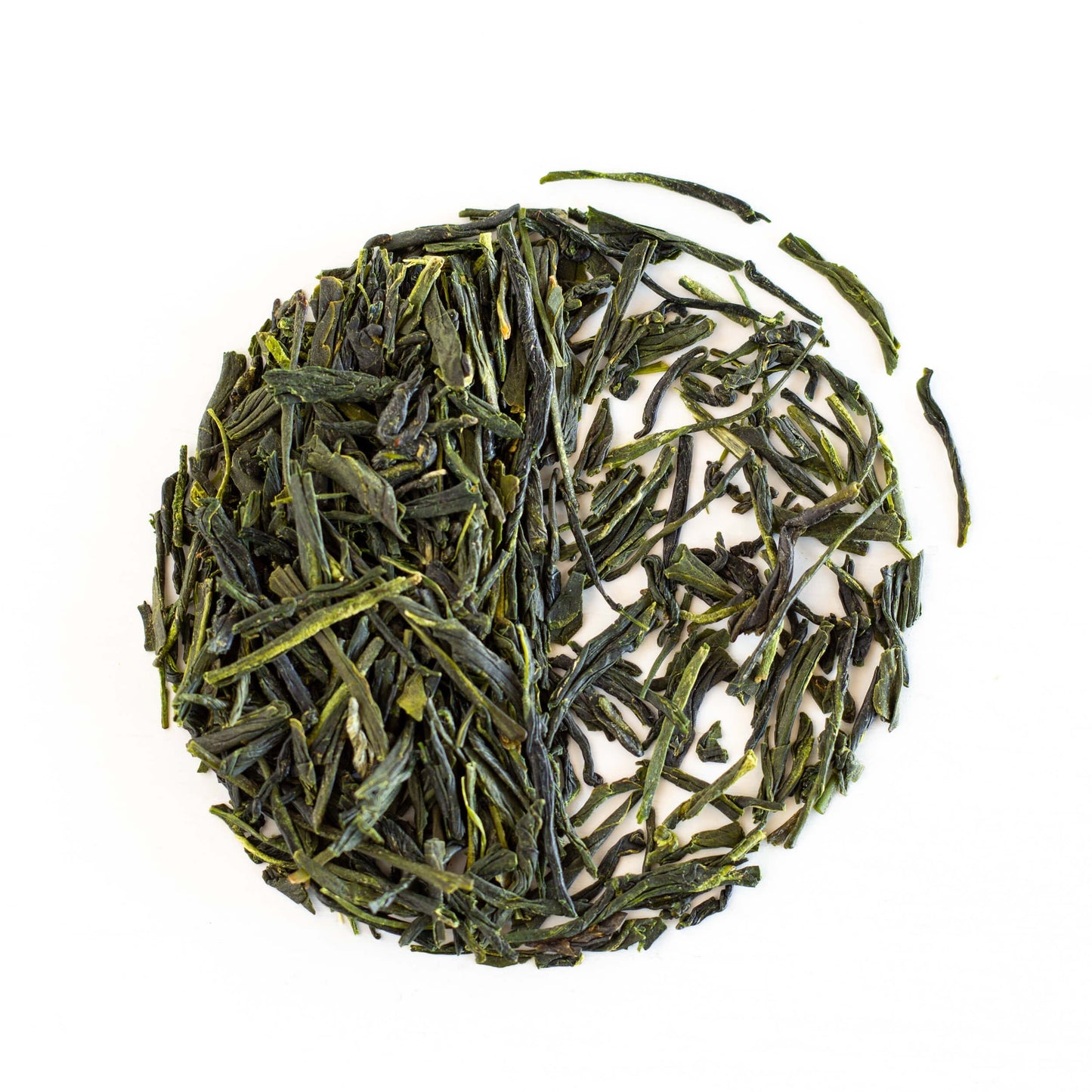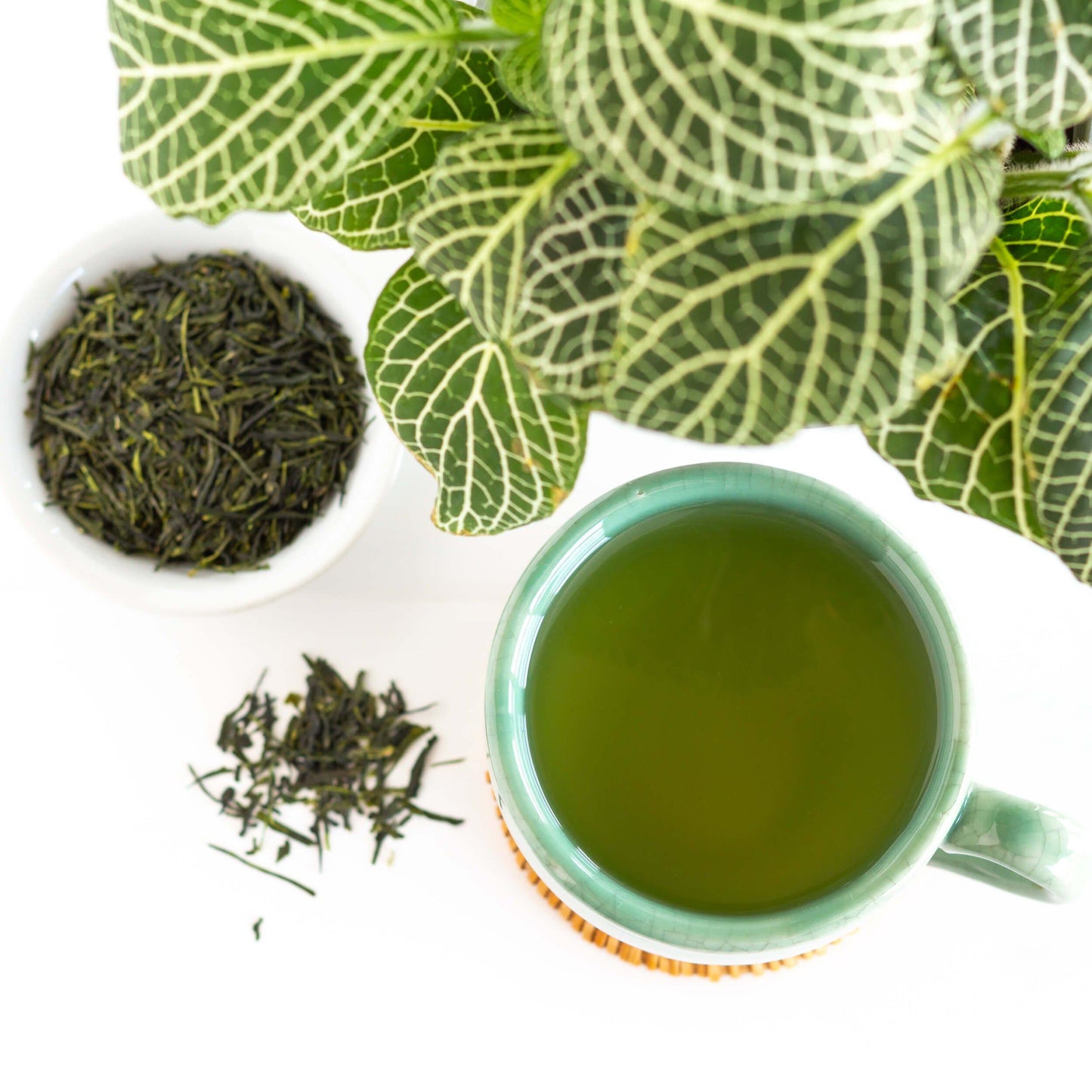What is Japanese green tea?
Green tea originated in southern China, and may have been consumed as far back as three thousand years ago. Around the sixth century, tea consumption and production spread from China to Japan, as well as to other neighboring countries such as Korea and Vietnam. Initially, green tea was closely associated with Buddhist monasteries and monastic culture in Japan. Tea was revered for its ability to induce a state of calm alertness that was especially conducive to meditation and religious practice.
Today, green tea is often associated with Japan just as much as with China. Some of the most popular green teas in Japan include Sencha and matcha, but there are a wide variety of other specialty teas to choose from, like Gyokuro, Kukicha, Genmaicha, and more. Tea is a popular part of Japanese culture, whether enjoyed as part of a formal and highly ritualized Japanese tea ceremony, or enjoyed more casually with family and friends. Here at ArtfulTea, we’re happy to be able to share our love for premium Japanese teas!
Japanese tea benefits
Like other types of tea made from the camellia sinensis plant, Japanese teas have a wealth of health benefits. Some of the benefits of green tea include boosting energy, enhancing mood, and helping with focus. Matcha, which is made from stone-ground green tea leaves, contains a concentrated dose of the many benefits associated with green tea.
How to prepare Japanese tea
Preparation for these teas varies depending on the type of tea in question. In general, Japanese green teas are steeped at low temperatures for short intervals in order to prevent the tea from becoming bitter. Traditionally, tea is prepared in Japan using cast iron pots called tetsubin or ceramic side-handle pots called kyusu. Matcha is traditionally prepared in a small bowl using a variety of specialized implements. Unlike other Indian and Chinese black teas, Japanese black teas tend to be brewed using cooler water and infused for a shorter period of time.
Our Japanese green teas
Here at ArtfulTea, we carry a wide variety of Japanese teas, from rare and specialty teas to everyday staples. All of our teas are selected for their superior quality and taste, and we’re proud to offer an extensive selection of Japanese teas for both experts and newcomers alike!
Gyokuro Green Tea
A shade-grown tea produced from the leaves of the first harvest, Gyokuro is one of the most prized teas in Japan, and is famed for its savory umami character. Gyokuro tea plants are shaded for at least three weeks before they are harvested, which increases the chlorophyll content in the plants and results in a dark, blue-green tea leaf with a rich, oceanic flavor and a subtle sweetness. This process also increases the caffeine and L-theanine content of the tea. Gyokuro is Japanese for “jade dew,” which refers to the bright green color of the brewed tea.
Kabusecha Green Tea
Kabusecha, which means “shaded tea” in Japanese, is a high-end green tea similar in character to Gyokuro. Kabusecha is high in both L-theanine and caffeine when compared to other green teas, and has a rich umami character with a lingering sweetness. Kabusecha tea plants are shaded for two weeks before harvest.
Sencha Green Tea
Sencha is a classic Japanese green tea, and is often considered the most widely consumed tea in Japan. Sencha is produced from leaves from the first and second harvest, and has a bright, vegetal character with a sweet finish. Our Sencha comes from Shizuoka on the Fujiyama mountain slopes, and brews into a bright greenish-yellow liquor.
Genmaicha Green Tea
Genmaicha is a traditional Japanese blend of Sencha and roasted brown rice. This green tea has toasty notes mixed with a pleasant mild flavor, sweet yet slightly earthy. During the firing of the rice, it’s not uncommon for some grains of rice to burst, so that some of the kernels look like popcorn! Genmaicha is Japanese for "brown rice tea.” Genmaicha is also sometimes known as “popcorn tea” or “people’s tea,” due to the fact that people were able to stretch their supply of tea further by blending it with roasted rice.
Genmaicha Matcha Green Tea
Genmaicha Matcha blends Genmaicha green tea with Japanese matcha for a tasty hybrid cup with a warm and earthy flavor. Genmaicha is a green tea blended with toasted rice, while matcha is a powder produced from finely ground whole tea leaves. While both Genmaicha and matcha can be enjoyed separately, we find that this combination brings out the unique flavors of both teas! Genmaicha Matcha brews up a bright green color, and has a rich flavor with a lingering sweetness.
Kukicha Green Tea
Kukicha is made from the young twigs and stems of the tea bush that are separated from Sencha during processing. Kukicha has a sweeter, lighter flavor than other types of green tea. Kukicha is very high in antioxidants and extremely low in caffeine, making it a traditional favorite for all ages.
Hojicha Green Tea
Hojicha is made from roasted leaves and stems of the tea plant. The roasting process imparts a toasty, nutty flavor to this unique tea. Hojicha brews up a caramel color and has a light natural sweetness. Because of its low caffeine content and mild taste, in Japan Hojicha is especially popular among children and the elderly.
Bancha Green Tea
Bancha is a Japanese green tea harvested in late summer. Similar in character to Sencha, Bancha is harvested later in the year, when the leaves are larger and thicker. This results in a grassy, fresh tea with a light body.
Hachiju Hachiya Shincha Green Tea
Hachiju Hachiya means “eighty-eight nights.” It refers to the eighty-eighth day after the first day of spring in the traditional Japanese calendar, which is said to be the best time to harvest tea. Shincha, which means “new tea,” is produced from the first harvest of Sencha tea plants in the spring, and is only available in very limited quantities.
Matcha
Matcha is a powdered green tea. The same shade-grown leaves used to produce Gyokuro are also used to make matcha, resulting in a bright green color and sweet and savory taste. Because matcha is made from the whole tea leaf, it contains a higher amount of many of the beneficial compounds present in green tea, including L-theanine. Matcha also has a much higher caffeine level. Ceremonial grade matcha can be enjoyed on its own when whisked in a bowl with hot water, while culinary grade matcha can be added to smoothies, lattes, and baked goods.
Bonus: Wakoucha Black Tea
While not a green tea, Wakoucha is a rare black tea also produced in Japan. It is a mild tea with a medium body, notes of honey and spice, and a smooth finish with just a hint of astringency. While Japan is best known for its green teas, it has produced a few specialty black teas for over a hundred years. Because Japanese black teas are made from unique tea cultivars rarely used to produce black tea, they are often different in character than Chinese or Indian black teas, with a bright, delicate flavor and a hint of natural sweetness.
Our Japanese Tea Collection >>>
